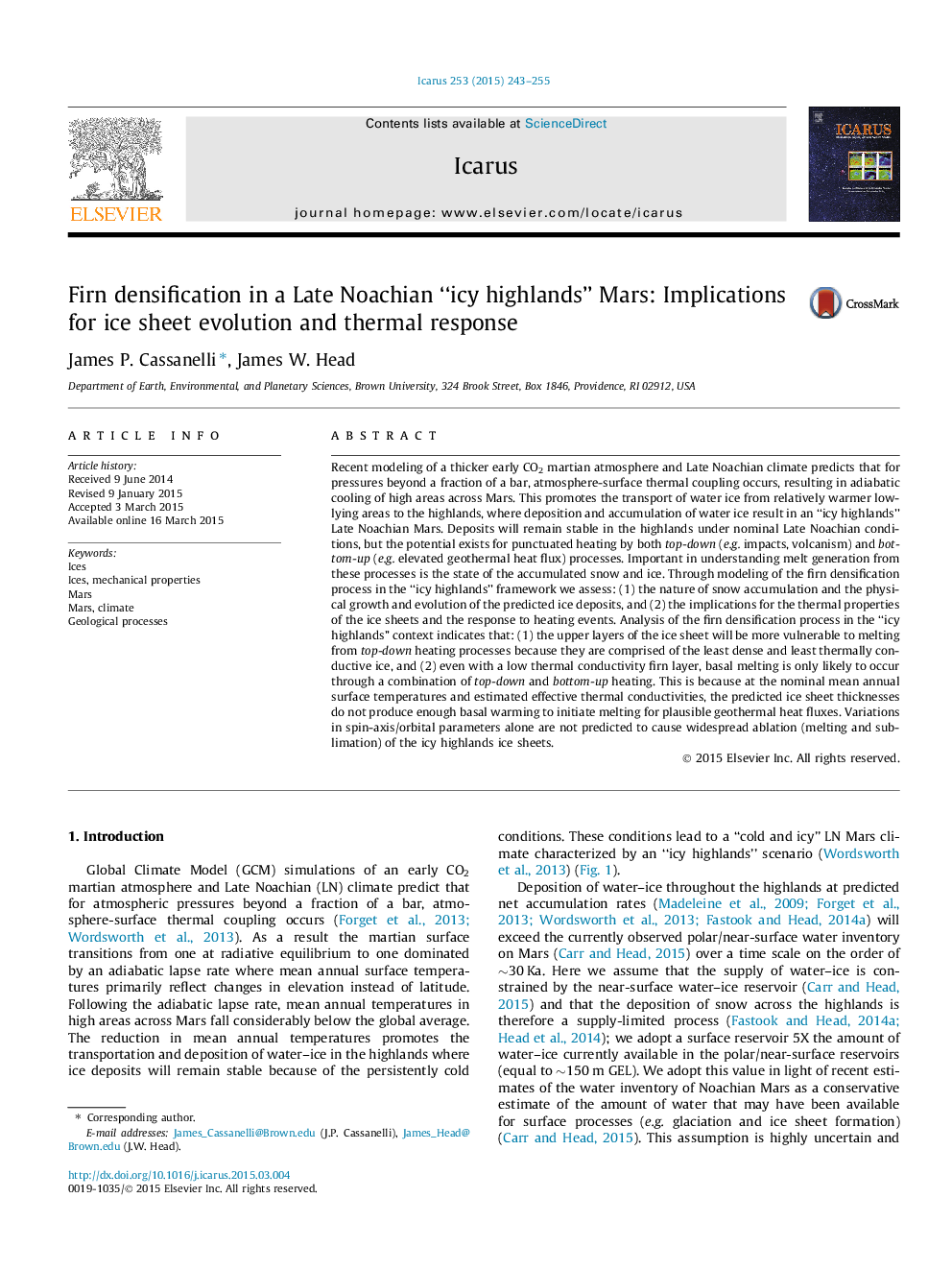| کد مقاله | کد نشریه | سال انتشار | مقاله انگلیسی | نسخه تمام متن |
|---|---|---|---|---|
| 8136476 | 1523537 | 2015 | 13 صفحه PDF | دانلود رایگان |
عنوان انگلیسی مقاله ISI
Firn densification in a Late Noachian “icy highlands” Mars: Implications for ice sheet evolution and thermal response
دانلود مقاله + سفارش ترجمه
دانلود مقاله ISI انگلیسی
رایگان برای ایرانیان
کلمات کلیدی
موضوعات مرتبط
مهندسی و علوم پایه
علوم زمین و سیارات
علوم فضا و نجوم
پیش نمایش صفحه اول مقاله

چکیده انگلیسی
Recent modeling of a thicker early CO2 martian atmosphere and Late Noachian climate predicts that for pressures beyond a fraction of a bar, atmosphere-surface thermal coupling occurs, resulting in adiabatic cooling of high areas across Mars. This promotes the transport of water ice from relatively warmer low-lying areas to the highlands, where deposition and accumulation of water ice result in an “icy highlands” Late Noachian Mars. Deposits will remain stable in the highlands under nominal Late Noachian conditions, but the potential exists for punctuated heating by both top-down (e.g. impacts, volcanism) and bottom-up (e.g. elevated geothermal heat flux) processes. Important in understanding melt generation from these processes is the state of the accumulated snow and ice. Through modeling of the firn densification process in the “icy highlands” framework we assess: (1) the nature of snow accumulation and the physical growth and evolution of the predicted ice deposits, and (2) the implications for the thermal properties of the ice sheets and the response to heating events. Analysis of the firn densification process in the “icy highlands” context indicates that: (1) the upper layers of the ice sheet will be more vulnerable to melting from top-down heating processes because they are comprised of the least dense and least thermally conductive ice, and (2) even with a low thermal conductivity firn layer, basal melting is only likely to occur through a combination of top-down and bottom-up heating. This is because at the nominal mean annual surface temperatures and estimated effective thermal conductivities, the predicted ice sheet thicknesses do not produce enough basal warming to initiate melting for plausible geothermal heat fluxes. Variations in spin-axis/orbital parameters alone are not predicted to cause widespread ablation (melting and sublimation) of the icy highlands ice sheets.
ناشر
Database: Elsevier - ScienceDirect (ساینس دایرکت)
Journal: Icarus - Volume 253, June 2015, Pages 243-255
Journal: Icarus - Volume 253, June 2015, Pages 243-255
نویسندگان
James P. Cassanelli, James W. Head,